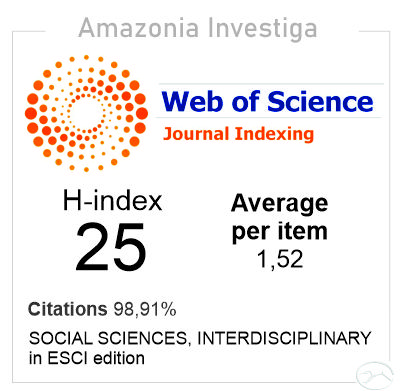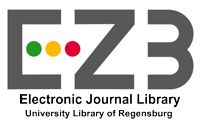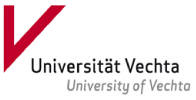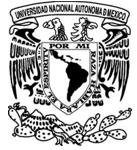Labor productivity as a source for effective development of production
Mots-clés :
Labor productivity, industrial production, production efficiency, methods of measuring productivity, natural method, cost method, cost savings, additional profit, innovative fund of an enterprise.Résumé
In traditional and modern economic theory, labor is considered as the most important factor in development of production. Because of this, most scientists studied the issue of efficiency for industrial production by assessing the factors of productivity growth. The significance and value of increasing economic efficiency as a scientific and practical task, determine the difficulties of a methodological nature in measuring labor productivity and justifying its role in the long-term development of an enterprise. The purpose of this article was to characterize the economic category of "labor productivity" in the terms of improving efficiency for industrial production. The methodological basis of the present article are the general provisions of the modern economics, especially the theory of labor value, theory of social production, the modern theory of efficiency, theory of firm, production and costs, and the concept of innovative development. The authors considered measurement methods and substantiated the main criterion of labor productivity, and presented a scheme for calculating labor productivity on the basis of the individual value of the product. This article examines the possibility of obtaining cost savings (additional profit) as a result of increased productivity. These savings are considered as the basis for formation of innovative funds in the enterprise.
Téléchargements
Références
Ardakani, M. P., Lashkarian, A., & Sadeghzadeh, M. (2015). The Translatability/Untranslatability of Poetics: Eliot's" Ash Wednesday" and its two Persian translations. UCT Journal of Social Sciences and Humanities Research, 3(1), 52- 60.
Bjuggren, C. M. (2018). Employment protection and labor productivity. Journal of Public Economics, 157, 138-157.
Chen, J., & Zhou, Q. (2017). City size and urban labor productivity in China: New evidence from spatial city-level panel data analysis. Economic Systems, 41(2), 165-178.
Ershova, M. V., Zharikov, V. D., Zharikov, R. V., & Zharikov, V. V. (1993). The Model of Labour Productivity Growth of the Industrial Company Staff. Organizator proizvodstva, 66-75.
Genkin, B. M. (2007). Organization, regulation and remuneration at industrial enterprises. BM Genkin, M.: NORMA Publishing House.
Gorchak, ?.?. (2018). Economic and mathematical methods of measurement of labor productivity in the enterprise. Eurasian Law Journal, 4(119), 369-371.
Kardas, E., Brožova, S., Pust?jovská, P., & Jursová, S. (2017). The evaluation of efficiency of the use of machine working time in the industrial company–case study. Management Systems in Production Engineering, 25(4), 241-245.
Kim, H.S., Jang, S.S. (2019). Minimum wage increase and firm productivity: Evidence from the restaurant industry. Tourism Management, Vol. 71. Pp. 378-388.
Krasova, E. V., Klindukh, R. V., & Krasko, A. A. (2018). Cyclicality of innovative development in entrepreneurship. Amazonia Investiga, 7(17), 21-30.
Kuzubov, A. A., Shashlo, N. V., Petruk, G. V., & Korostelev, A. A. (2018). Developing a supply chain subsystem to manage the process of obstacle elimination for the innovative development of business entities. International Journal of Supply Chain Management, 7(5), 621-631.
Latkin, A. P., Maidanevych, Y. P., & Komarov, P. I. (2018). Analyzing and identifying the factors affecting the global supply chain competitiveness of industrial products. International Journal of Supply Chain Management, 7(6), 544-549.
Lazarev, G. I., & Krasova, E. V. (2018). Research and development in China: scope and specifics of innovation process. Amazonia Investiga, 7(14), 73-83.
Lima, A., Mendes, D., & Paiva, S. (2018). Outdoor Navigation Systems to Promote Urban Mobility to Aid Visually Impaired People. Journal of Information Systems Engineering & Management, 3(2), 14.
Marx, ?. (2017). Capital: critique of political economy. Litres Publ. 2691 p. (on Rus).
Mardani, M., Lavasani, S. M., & Omidvari, M. (2014). An investigation into DOW and MOND indices with fuzzy logic based on fire and explosion risk assessment in Iran oil refinery, UCT Journal of Research in Science, Engineering and Technology, 2(3): 126-137.
Mattsson, P. (2018). The impact of labour subsidies on total factor productivity and profit per employee. Economic Analysis and Policy.
Nakamura, K., Kaihatsu, S., & Yagi, T. (2019). Productivity improvement and economic growth: lessons from Japan. Economic Analysis and Policy, 62, 57-79.
Nisawa, Y. (2018). Applying van Hiele’s Levels to Basic Research on the Difficulty Factors behind Understanding Functions. International Electronic Journal of Mathematics Education, 13(2), 61-65.
OSIPOV, V. A., & KRASOVA, E. K. (2017). Modern Specialization of Industry in Cities of the Russian Far East: Innovation Factor of Dynamics. Revista ESPACIOS, 38(62).
Rada, N. E., & Fuglie, K. O. (2018). New perspectives on farm size and productivity. Food Policy.
Sink, D. S. (1989). Upravlenie proizvoditel'nost'yu: planirovanie, izmerenie i otsenka, kontrol'i povyshenie (Productivity management: planning, measuring and evaluation, control and promotion). Moscow: Progress.
Shash, N. N., & Borodin, A. I. (2015). Indicators and methods for measuring labor productivity and the possibility of their use in enterprises. Uchenye zapiski Petrozavodskogo gosudarstvennogo universiteta, 3-1.
Stiglitz, J., Sen, A. K., & Fitoussi, J. P. (2009). The measurement of economic performance and social progress revisited: reflections and overview.
Tang, M. C. (2017). Total factor productivity or labor productivity? Firm heterogeneity and location choice of multinationals. International Review of Economics & Finance, 49, 499-514.
Tarancón, M. Á., Gutiérrez-Pedrero, M. J., Callejas, F. E., & Martínez-Rodríguez, I. (2018). Verifying the relation between labor productivity and productive efficiency by means of the properties of the input-output matrices. The European case. International Journal of Production Economics, 195, 54-65.
Üngör, M. (2017). Productivity growth and labor reallocation: Latin America versus East Asia. Review of Economic Dynamics, 24, 25-42.

































































.gif)






